One Quintal is Equal to How Many kilogramsQuantifying weight or mass is done using the units of measurement, kilo, and quintal. A popular weight measurement used in agricultural techniques is the quintal. It is equivalent to 220.46 pounds or 100 kg. 0.01 quintals are equivalent to one kilogram. It is frequently used daily to determine the weight of numerous items, including food, books, and personal items. It's critical to comprehend the distinction between a quintal and a kilogram, particularly in agricultural trade. To ensure precise and consistent measurements, it's crucial to understand how to convert between various units of measurement. 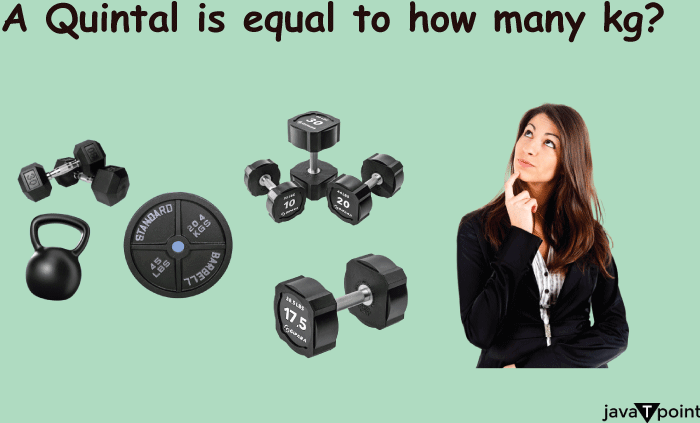
Definition of Quintal and KilogramQuintalA quintal is a unit of weight that is widely used, particularly in trade and agriculture. It is equivalent to 220.46 pounds or 100 kg. The word "quintal" comes from the Latin "quintals," which means "the fifth part." A quintal was one-fifth of a ton or 100 kg in the past. It is frequently used to calculate the weight of many agricultural products, including grains, fruits, and vegetables. KilogramKilograms are used to break it down to grams. One-kilogram equals 1000 grams. The kilogram frequently measures commonplace commodities like food, household goods, and personal items. Historical Background for Kilogram and QuintalThe establishment of standardized units and the growth of weight measurement technologies are both factors in the historical setting of the quintal and kilogram. Here are some details concerning the origins of the quintal and kilogram: 1. Ancient Weight Measurement Systems Over time, different civilizations created weights-and-measures systems. These systems frequently varied between locations, which complicated trade and communication. The Egyptian, Mesopotamian, and Roman systems are a few examples of historic weight measurement methods. 2. Quintal Evolution The quintal evolved from earlier weight systems. The word "quintal" comes from the Latin word "quintiles," which means "the fifth part." In the past, it was referred to as one-fifth of a ton. A quintal's exact value varies depending on the area and the time. 3. Development of the Metric System The metric system was created due to the necessity for a standardized, acknowledged system of weights and measurements in the late 18th century. As a result, the metric system was created. It established a decimal-based system, measuring length, weight, volume, and other quantities in a consistent and coherent framework. 4. Kilogram The kilogram was chosen as the metric system's fundamental unit of mass. The International Prototype of the Kilogram (IPK), a platinum-iridium cylinder held at the International Bureau of Weights and Measures (BIPM) in France, was the original definition of the kilogram's mass. Adoption and Standardization of the Metric SystemThe metric system was widely adopted worldwide. To maintain measurement consistency, international agreements were created. The definitions of metric units, including the kilogram, are now maintained and updated by the General Conference on Weights and Measures (CGPM). Quintal's Historical Use in Trade and AgricultureThe quintal was widely used in trade and agriculture. Agricultural commodities like grains, fruits, vegetables, and other bulk goods were frequently measured and traded using it. The quintal was a practical measurement and pricing unit for items in these situations. 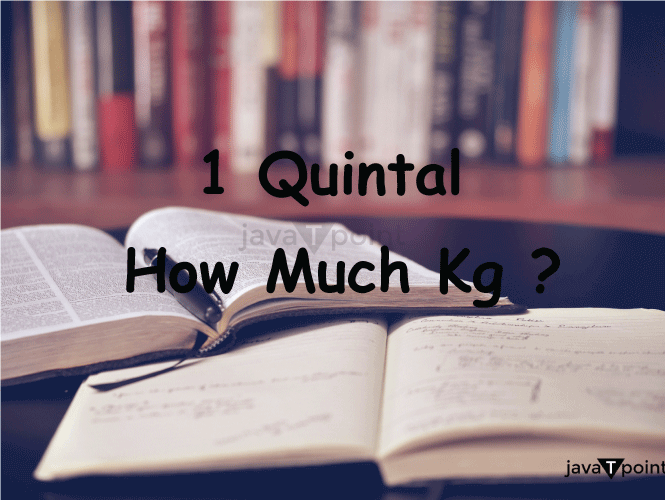
The growth of weight measuring systems and the significance of standardized units in trade, commerce, and daily life are better understood by comprehending the historical context of the quintal and kilogram. Weight measurements are now consistently and accurately recorded worldwide thanks to the metric system's development and the kilogram adoption as an international standard. Quintal to Kilogram ConversionUsing the conversion factor below, you can change quintal to kilogram: 1 Quintal = 100 Kilograms You multiply the number of quintals by 100 to convert it from quintals to kilograms. The conversion's formula is as follows: Number of Kilograms = Number of Quintals ×100 For instance, the conversion to kilos for three quintals would be: Number of Kilograms = 3 quintals × 100 = 300 kilograms Therefore, 300 kilograms are equal to 3 quintals. Formula for Converting Quintals to KilogramsQuintals can be converted to kilograms using the following simple formula: Number of Kilograms = Number of Quintals × 100 This equation is based on the notion that 100 kilos comprise one quintal. You may determine the weight in kilograms by multiplying the quintals by 100. Calculation Illustration for Kilogram to Quintal ConversionSay that we wish to convert five quintals to kilos. We'll apply the conversion equation: Quintals divided by 100 equals the number of kilograms. Adding the specified value to the formula: Kilograms = 5 quintals ×100 500 kilos are the number of kilograms. 500 are thus equal to 5 quintals. Let's attempt another illustration. The computation for 2.5 quintals is as follows: Kilograms = 2.5 quintals ×100 250 are the number of kilograms. Two hundred fifty kilograms are, therefore, equal to 2.5 quintals. Conversion Table for Quintal to Kilogram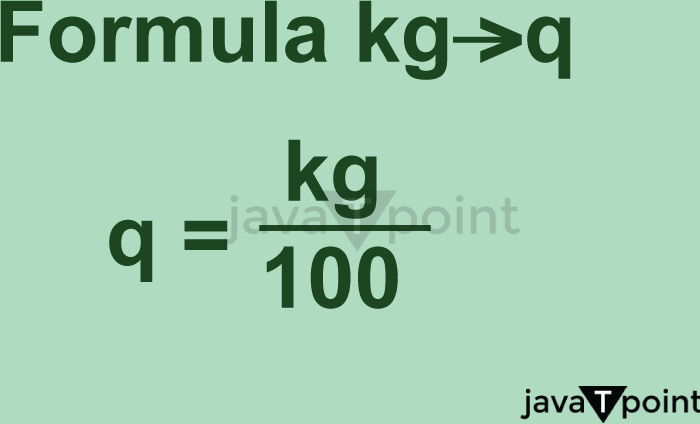
Here is a conversion chart that compares quintals and kilograms at equivalent values:
Find the number of quintals you wish to convert and read the value in kilograms that corresponds to it in the table to use it. For instance, you may look up four quintals in the table and see that it is equivalent to 400 kilograms. This table can be useful when quickly converting between quintals and kilograms without conducting computations each time. Conversion Between Quintal and Kilogram in Various SystemsThe conversion between a quintal and a kilogram can change in various measurement systems. The metric and imperial systems are the two most widely used systems. Let's examine the conversion factors in these systems between quintals and kilograms: 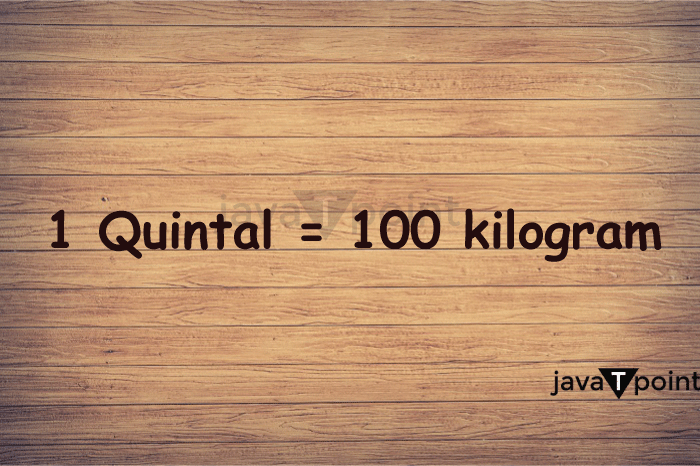
1. Metric System In the metric system, quintals and kilograms are converted using the same formula: One hundred kilograms make up a quintal. Most nations using the metric system, including all, utilize the same conversion factor. 2. Imperial System The imperial system employs pounds as the main unit of weight. Hence the conversion between quintals and kilograms is different. These are the conversion factors:
In the imperial system, quintals must first be converted to pounds using the quintal-to-pound conversion factor. Then pounds must be converted to kilograms using the pound-to-kilogram conversion factor. To convert two quintals to kilograms using the imperial system, for instance:
Consequently, in the imperial system, two quintals are equivalent to 199.58 kg. The imperial system is predominantly utilized in the United States, and a few other nations, but the metric system is the one that is used the most extensively worldwide. Conversion of Quintal to Kilogram in Daily LifeQuintal-to-kilogram conversions are not frequently employed daily, especially in dominant metric system areas. Instead, the kilogram is the chosen unit of measurement for weight and mass in everyday life. In many facets of our daily lives, kilograms are frequently utilized, including: 1. Grocery Shopping The weights of meat, produce, and other food items are often measured and labeled in kilos when purchased. It makes it easier for customers to comprehend how much they are purchasing. 2. Body Weight Individuals may properly monitor and track their body weight thanks to personal scales, which typically indicate weight in kilograms. 3. Fitness and sports Dumbbells, barbells, and other exercise equipment weights are commonly measured and described in kilograms when used in fitness and sports activities. 4. Cooking and Baking Many recipes and cooking instructions provide ingredient amounts in grams or kilograms, assuring accuracy in cooking and baking. 5. Weight Restrictions for Packages and Luggage Weight restrictions are frequently specified in kilos when sending or receiving packages and checking luggage at airports. While kilos are the more common unit of weight measurement in our daily lives, quintals may still be employed in specialized settings in agricultural, trade, or industrial sectors. Common Applications of Kilogram and QuintalQuintal and kilogram each have unique uses in many industries. Let's examine how quintal and kilogram are typically used: Quintal1. Agricultural Trade Quintals are frequently used to measure and exchange agricultural products such as grains, fruits, vegetables, and other large quantities of produce. It ensures uniform measurements and streamlines processes. 2. Farming and Harvesting Farmers frequently use quintals to gauge and control crop yields during cultivation and harvest. It aids in figuring out the needs for production, storage, and transportation. 3. Livestock and Fisheries For sale or record-keeping, the weight of animals, such as cattle or fish, may be measured using quintals. 4. Industrial Applications Quintals measure raw resources, such as minerals, ores, or chemicals, in some industries when the quantities are substantial. Kilogram1. Everyday Weights Kilograms frequently measure household objects, meal amounts, and individual body weights. It is a common unit for estimating an object's weight daily. 2. Retail and Commerce Kilograms are frequently used in retail and commercial environments, such as marketplaces, supermarkets, and grocery shops, to measure and price goods for sale. 3. Industrial and Production Kilograms are used in industrial operations to weigh products, measure raw materials, and keep track of inventory. 4. Scientific and Laboratory Work To correctly measure chemicals and materials in experiments and analysis, scientists, researchers, and lab staff use kilograms. 5. Health and Fitness Kilograms are used in healthcare settings to gauge patient weight, measure medicine dosages, and establish a healthy diet. 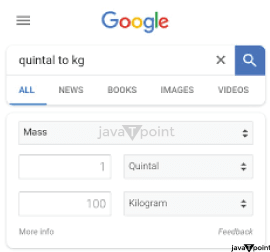
Quintal and kilogram can be used appropriately by knowing their unique purposes, ensuring precise measurements, and efficient communication in diverse professions. Quintal to Kilogram Conversion ImportanceFor various reasons, understanding the quintal-to-kilogram conversion is crucial. 1. International Trade Accurate conversion between quintals and kilograms is essential because many nations may employ various weight measurement systems. Accurate pricing of commodities and efficient trade transactions are made possible by understanding the conversion. 2. Practices in Agriculture Understanding the conversion from quintals to kilos is crucial, especially in areas where quintals are frequently used. It aids in precisely quantifying and evaluating crop yields, planning logistics for storage and transportation, and establishing fair prices for agricultural products for farmers, dealers, and other stakeholders. 3. Uniformity and Standardization Quintals and kilograms are converted to ensure accuracy and uniformity in weight measurements. It makes it possible to communicate clearly and prevents misunderstandings or mistakes when evaluating weight information. 4. Daily Life Precision Being aware of the conversion helps for precise knowledge of weight measurements. It assists with daily chores that require weighing objects or food items, such as grocery shopping, cooking, figuring out one's weight, and others. 5. Compatibility with Different Systems A working knowledge of the quintal-to-kilogram conversion enables people to operate smoothly across various weight measurement systems. It makes interactions and partnerships possible in various industries, including international trade, science, and agriculture. 6. Accurate Documentation and Record-Keeping Accurate documentation and record-keeping are guaranteed by proper conversion between quintals and kilos. It aids in keeping accurate weight records for things like inventory control, sales records, and research data. Knowing the quintal-to-kilogram conversion helps preserve uniformity, ease trade, and ensure accurate measurements. Conversion of Quintal to Kilogram in Agricultural PracticesSince the quintal is frequently used to measure and exchange agricultural commodities, converting quintals to kilograms is particularly important in agricultural activities. The quintal-to-kilogram conversion for agricultural purposes is as follows:
Understanding the quintal-to-kilogram conversion is essential for farmers, traders, and other agricultural practitioners. Accurate measurements, efficient trading processes, and efficient management of agricultural commodities from production to market are all made possible by this knowledge. Conversion of Quintals to Kilograms in the Industrial and Commercial SectorsWeight measures play a significant role in several industrial and commercial areas, making the conversion of quintals to kilograms vital in these fields. The quintal-to-kilogram conversion works as follows in these situations:
Weight measurements are crucial in the shipping and logistics sector. Quintals are converted to kilos to provide consistency and compatibility with standardized weight units used in transportation.
Next Topic1 Cusec is Equal to How Many Litres
|
 For Videos Join Our Youtube Channel: Join Now
For Videos Join Our Youtube Channel: Join Now
Feedback
- Send your Feedback to [email protected]
Help Others, Please Share










